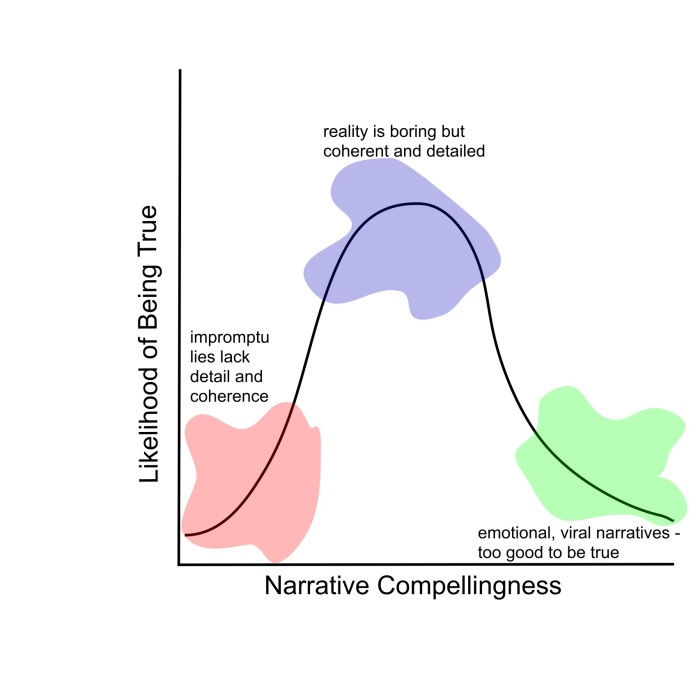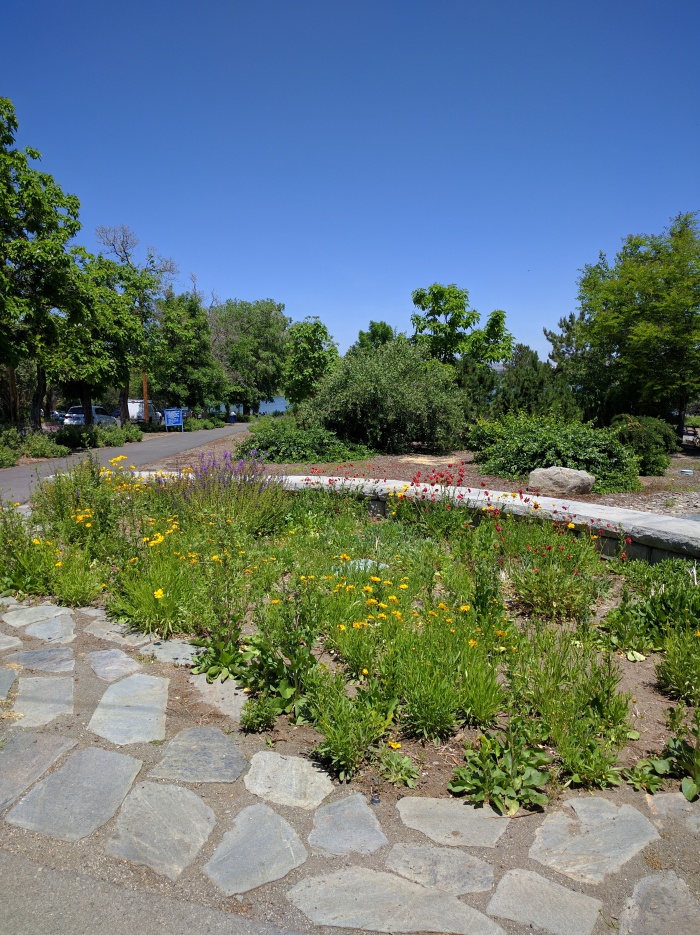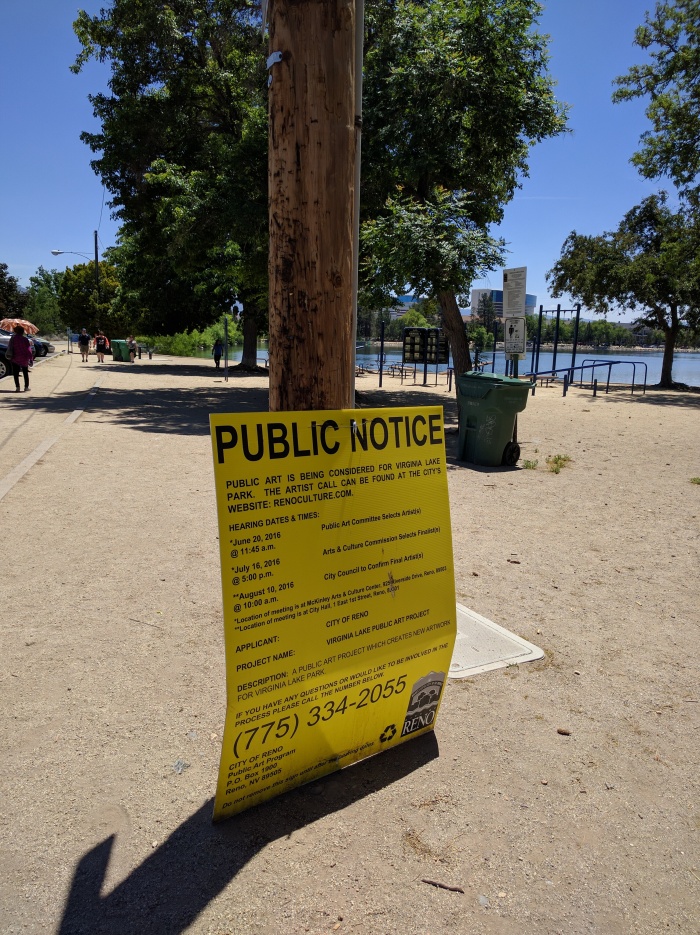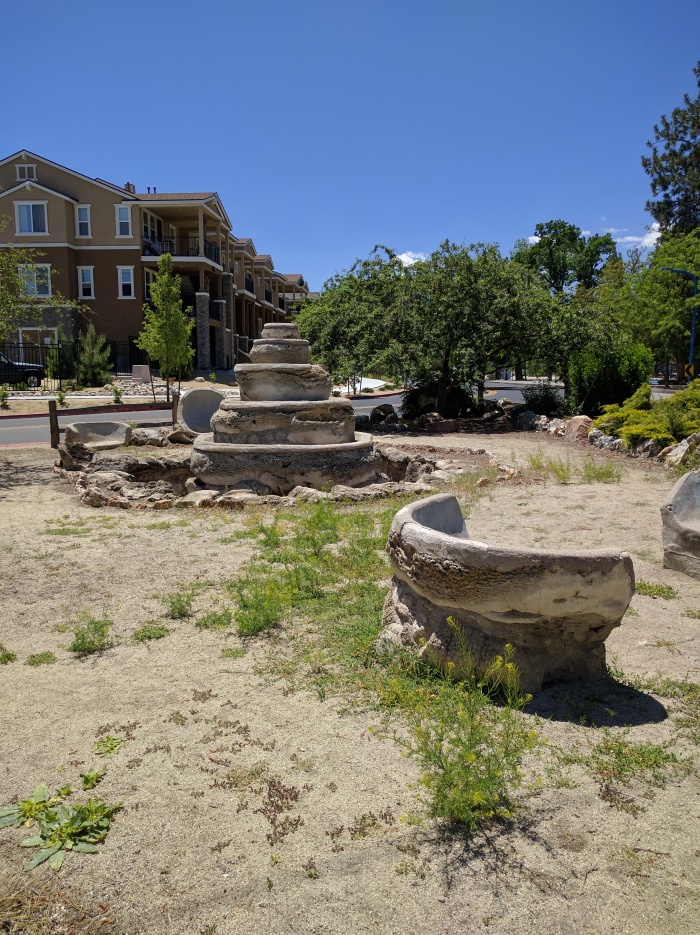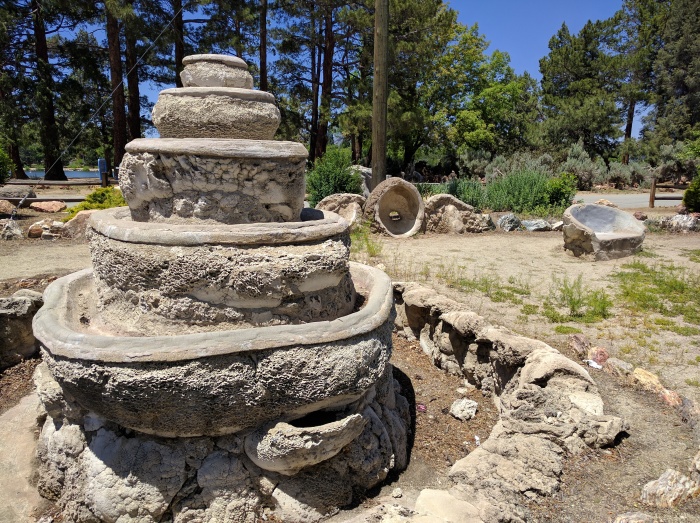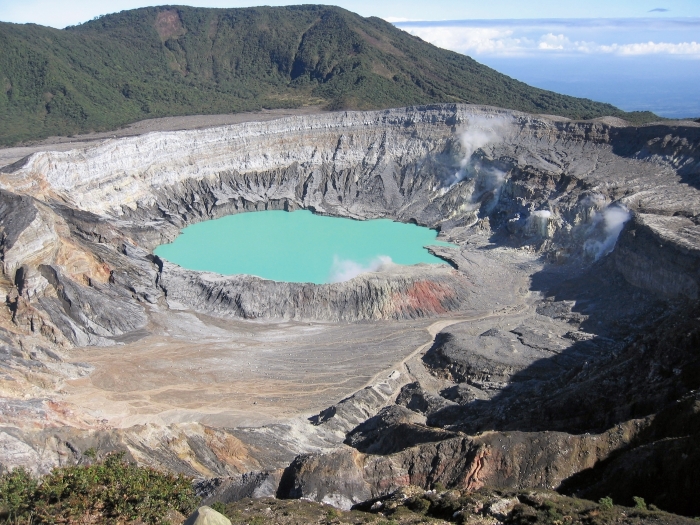The mountain is a natural, physical, geographic pattern that offers itself as a hard-to-fake measurement of human effort. Its ritual and cognitive significance is difficult to understand without climbing it, but I will offer an account of its place in the human order as best I can.
Many places occupied by humans (including my current home) have no mountains at all. In A Pattern Language, Christopher Alexander et al. provide a system of asterisks next to patterns, with more asterisks indicating a pattern that is universal, necessary, and irreplaceable. A pattern with zero asterisks is very possibly not a universal pattern. The mountain, taken literally, would likely have zero asterisks next to it as a ritual pattern. But after exploring the meaning of the mountain, and the cognitive experiences and “ritual vitamins” it provides, I will suggest that the mountain may be seen as a metaphor for other patterns. Physical mountains are still extremely important, but I hope to show the place of figurative “mountains” in human motivation, organization, and cognition.
In the lectures of William James, The Varieties of Religious Experience, an amusing number of the transcendental experiences reported by his informants take place while climbing mountains. The lectures themselves I will turn to later as an example illuminating metaphorical “mountains” and their relationship to the terrain they overlook.
I am not a mountain climber in any serious sense. I have climbed mountains in the Eastern Sierra of California and the Idaho panhandle, backpacking often for many days, since I was a child, but I have not climbed any really difficult mountains. For many years I specialized in running up and down the modest hills and mountains within the city limits of Los Angeles, California, and it is those experiences which I wish to condense and relate here.
For orientation purposes, here is a hand-drawn map of the three sets of hills and mountains that I have spent the most time running up and down:
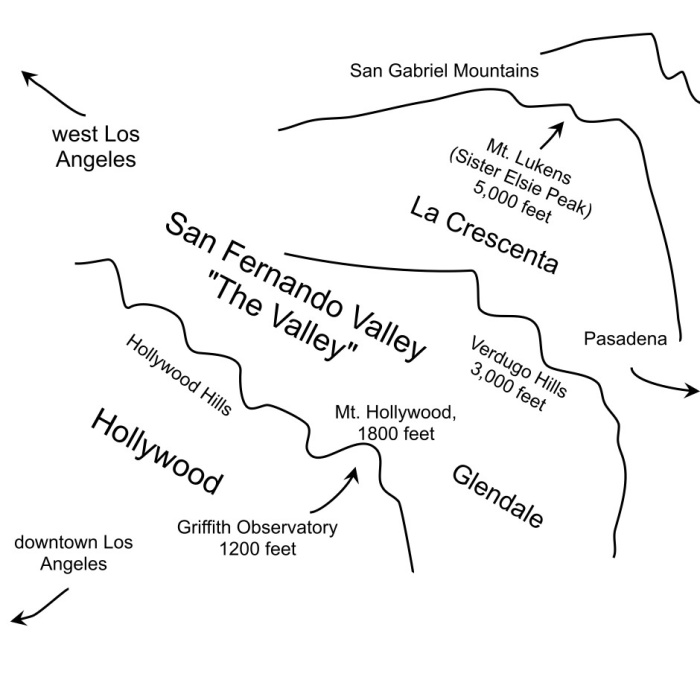
Probably the best, most fun hill run in Los Angeles is the one I completed earliest, and the one I ran over and over again, many dozens of times. It is the run from Hollywood, beneath the famous sign, up through Bronson Canyon to the Griffith Observatory, and back down to the east through Griffith Park.
You might start at the Bourgeois Pig, a coffee shop on Franklin Avenue. From there, head north up Bronson Avenue until it becomes Canyon Drive. This is a shady neighborhood with many trees and 1920s architecture, very quiet despite its proximity to the city streets. Canyon Drive enters Bronson Canyon-Griffith Park through an iron gate, and continues up through the park, past playgrounds and picnic tables, eventually becoming a dirt road open only to foot traffic (and dogs). You can make a sharp right and visit the bat caves if you like, adding only a few hundred feet to your trip. The main trail follows the drainage of a creek, which is often full of tall, bushy stands of fennel and poison hemlock. Eventually you cross the creek and enter the most challenging part of the run: the exposed, shadeless dirt road cut into the west side of the eastern slope of Bronson Canyon. The sun is hot, the slope is steep but runable, and the terrain is boring and monotonous. One season I saw tomato plants, obviously being tended by someone, on the side of the slope. Often there are people walking dogs.
When you make it to the end of this leg, the trail shifts west and levels out briefly to a view point jutting out on the south side of the Hollywood Hills. Take a moment to look at the canyon, streets, and smog below, and continue up a few hundred more feet. Here you intersect a larger dirt road, used as a bridle path by groups of tourists on horseback that you might have to dodge. To the west is the incredibly boring and thankless Hollywood sign; to the east is the goal, Griffith Observatory. Continue east on this dirt road until it turns into soft black asphalt.
Here, the empty road curves around back toward the city to the south. This is the most glorious part of the run. After ascending on rough, rocky dirt, now you gently ascend on wide, clean asphalt before – wonderful surprise! – gently descending as the road curves. I find it very difficult not to stick my arms out airplane-style on this part of the run, out of pure joy. There are trees on this part of the run, offering some shade. And all of a sudden, as the road curves around the southernmost part of the mountain, you get your first view of the observatory.
Eventually the road meets the parking lot for the observatory. Here you can either run up the sidewalk, if it’s not too crowded, or climb up to the trail that goes all the way up Mt. Hollywood (which is not the boring mountain with the sign, but the peak just to the north of the observatory). Head left (north) and run up the switchbacks to the peak, if you like – I usually don’t, as I don’t think it adds much to the experience. Head right (south) toward the observatory and the first of its rewards – the drinking fountains. I avoid carrying water because running with water removes some of the proprioceptive beauty from the experience; it’s necessary on the other peaks I will describe, but it’s not necessary here.
When you’ve gorged yourself on water, stroll across the courtyard of the observatory, touch the monolith with names of scientists carved into it, and admire the smoggy view of the city below. On a very clear day you can see the ocean, but this is so rare that it’s wholly surprising when it happens. If you’ve arrived during normal business hours, climb down the western stairs to the café and eat a rice crispy treat and milk. (Sometimes the caterer makes the rice crispy treats out of other cereals, such as fruit loops or cocoa puffs; see Note 1.)
When you’re done, walk over to the eastern side of the observatory and begin your descent. It begins gently, but quickly gets steep, so that maintaining a running pace requires full concentration, frequently producing the mental state known as “flow.” It is the most thrilling part of the run, resembling what I imagine to be the experience of steering a Star Wars air motorcycle through the forest. The trail descends into Griffith Park near the Greek Theater, with stone-walled trails, trees, and more drinking fountains. Finally, you hit Los Feliz Boulevard just as it is about to turn south and become Western. As this happens, the road steeply declines, offering another view of the grid of Los Angeles, and the sunset, assuming it’s that time of day. Turn west onto Franklin and run until the street becomes so busy that you must stroll instead. I think the loop is about eight miles, give or take, with around a thousand feet of elevation gain (you go a bit above Griffith Observatory on the highest parts of the run).
I have covered this run in much more detail than I will cover the other mountain ranges, because it is dearest to me and I have done it so many times. The other runs are less narrative and varied, more difficult, steeper, longer, and more “mountainy” in general.
The Verdugo Hills (or, more grandly, Verdugo Mountains) are just to the north of the Hollywood Hills; between the two sets of hills is the San Fernando Valley, known as The Valley, as in Valley girls. Burbank and Glendale sit between the two mountain ranges.
There is no water at the top of the Verdugo Hills, and the runs up and down are around twelve miles, so you have to carry water. The most elegant solution for this is to carry a small running backpack that holds a bladder of water with a hose to your face, known by brand as a Camel Bak. It’s not as nice as running free without carrying anything, but it’s worth doing. (I did it without carrying any water once, in July I believe, and while I value the experience, I would not wish to repeat it.)
Suburban roads through residential districts approach the mountains from all sides – from Sun Valley to the west, Glendale and Burbank to the south, and La Crescenta to the north. At the lower view points close to the city, the rocks are covered in graffiti tags, and the ground is littered with shattered beer bottles and green medical marijuana prescription containers (again see Note 1). Fire roads connect these points, passing through somewhat monotonous terrain, offering only benches with fine views, the fire department’s eucalyptus grove, and a view of the Burbank Airport to break things up. At the peak is some kind of radio tower surrounded by chain link fence, usually populated by mountain bikers resting and looking at the view. From the peak, elevation about 3000 feet, you can look down on Mt. Hollywood as well as the surrounding neighborhoods.
The final mountain is the only real mountain in Los Angeles, Mt. Lukens, or Sister Elsie Peak, in the southern part of the San Gabriel Mountains. The peak is over 5,000 feet in elevation, making Los Angeles the large city with the greatest difference between its highest and lowest points in the United States. Approach it from Dukmejian Wilderness Park, or below, from Foothills Boulevard, to add miles and elevation, if you like. Again, there is no water at the peak, so you must carry a great deal of water. Your phone will probably not have any signal. There are snakes and cougars, as well as tiny frogs and deer.
The trail climbs through forest and over a small creek, eventually meeting the fire roads, switching back on the south face of the mountain. High up on the mountain, not quite at the peak, the trail extends very far to the south and offers the most important moment of the climb. (The peak itself is about as ugly as a peak can be, littered with communication towers and chain link fence.)
At this point, all of a sudden, looping out southward, you can see the entire basin. You can see both of the smaller sets of mountains, the Verdugo Hills and the Hollywood Hills, far below. If you have spent many months or years walking, running, driving, and bicycling around the neighborhoods and towns and hills, connecting the different points and forming a sense of place, this view offers a jarring, visceral insight into why everything is where it is. You can see why the streets and highways and neighborhoods are where they are, why there are blank spots on the map, the spread of the three-dimensional geographic and urban reality sweeping out toward Pasadena. Everything becomes crystal clear, even through the distinct and geographically understandable patches of smog, beyond communication in words.
The mountain itself offers its insights only in relation to the surrounding terrain. A new visitor may find the view breathtaking, but will not get the thrill of understanding and connection that an experienced Angelano has access to.
For every human domain, there is a terrain, and an ascending set of peaks. William James refers to the “terrain” as the “apperceiving mass” – the raw material, reports of experiences, through which one can perceive the insights available from the “peaks” of theory. Darwin’s astounding insight is perhaps most meaningful to those, like him, who spent long years understanding the terrain of biology, its specimens, fossils, distribution, and variety. I am suspicious of learning the clear, cold insights of economics, for instance, without a strong grasp of the terrain of human transactions.
William James’ lectures, I think, form a sort of mountain – the difficult effort of reading them is required to effectively ascertain the understanding contained within. I do not think they are capable of a satisfying tl;dr. A summary of main points is possible, but it can never be as satisfying or convincing if it eliminates the terrain – the apperceiving mass – from the experience.
Ascending a mountain, alone or with a group, is a fine thing. It is one of the best rituals I have ever experienced. Insight and theory are also fine things. But the true value of the mountain, perhaps, is in the descent – and what is brought down, whether it is Moses’ stone tablets, or Darwin’s theory of evolution, or, more likely, something much more modest. This is how the mountain gains its relation with the surrounding terrain, which provides it with context and meaning.
The I Ching trigram “mountain” (read from the bottom up) is yin, then yin, then yang at the top. Two of these trigrams together gives the hexagram Mountain:

I have called the I Ching an epistemic failure magnet (perhaps using slightly more vulgar language), for its sparse binary structure allows any information at all to be projected onto it. It is, perhaps, a mountain that has lots its terrain, and since the terrain that it condenses has been lost, if it ever existed, its insights must have limited value. But the I Ching is also very beautiful. Its binary organization begins with a duality, and a binary duality is a very satisfying pattern, as I’m sure my fellow Ribbonfarmer Venkat, samurai of 2X2 matrices, would agree. Binaries are satisfying ways of imposing meaning on the world. A continuum is one way of making the duality pattern more complex and meaningful; another way is to arrange instances of the binary along a dimension, such as time.
I like Nigel Richmond’s somewhat counterintuitive and unorthodox explanation of yin and yang, as change and no change, respectively. In this interpretation, yin is activity, the receiver of change; yang is stillness, the provider of change. (I think of them as corresponding to the Myers-Briggs types ESFJ for yin and INTP for yang, rather than to object-level male and female.) Yin is activity without thought, yang is thought without activity.
A fun game, along this vein, is to listen to songs and classify each song and each bar by the trigram of stillness and motion that it represents. It is a game of applying a satisfying, beautiful duality to a random sample of human art, and the practice of this game can provide both pleasurable and cautionary understanding of how much similar “games” are played in human cognitive domains.
The mountain trigram, again read from the bottom up, presents a picture of a mountain, and a temporal picture of the process by which the mountain is formed – geological activity pushing up, then more, then stillness. It is also a picture of the process of ascending a mountain. The full hexagram, then, may be seen as a portrait of ascending the mountain, and then descending it: activity, activity, and then the stillness of the peak; then activity, activity, and then the stillness of integrating the insights of the peak with the population of the surrounding terrain.
Climbing mountains is a beautiful ritual, valuable for its own sake. If the world were about to end, it is one of the things I would want to be doing. And insight and understanding are beautiful and valuable for their own sake. But to be useful, and for their beauty to be shared, these patterns must be integrated in relation to the surrounding terrain. The value of what is carried down may only be measured once this final, difficult step is completed – in the stillness after the descent, and in what follows. Patterns may be valuable in and of themselves, but their value is limited unless they can spread. And this is a great challenge.
Note 1. California is a medical marijuana state with somewhat lax prescription standards.
